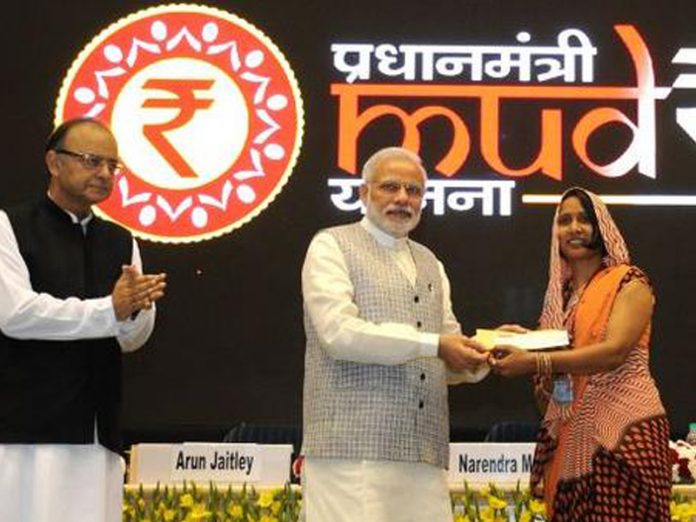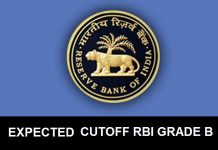PRIME MINISTER’S EMPLOYMENT GENERATION PROGRAMME (PMEGP)
PMEGP is a credit linked subsidy programme launched on 15th August 2008 by merging the two erstwhile schemes called Prime Minister’s Rojgar Yojana (PMRY) and Rural Employment Generation Programme (REGP). The basic objective was generation of employment opportunities through establishment of micro enterprises in rural as well as urban areas. It is a central sector scheme administered by the Ministry of Micro, Small and Medium Enterprises and implemented by Khadi and Village Industries Commission (KVIC) as the single nodal agency at the National level. At the State level, the Scheme is be implemented through State KVIC Directorates, State Khadi and Village Industries Boards (KVIBs) District Industries Centres (DICs) and banks.
Objective:
- To generate employment opportunities in rural as well as urban areas through setting up of self employment ventures.
- To bring together widely dispersed traditional artisans/ rural and urban unemployed youth and give them self-employment opportunities to the extent possible, at their place and also to increase their income
- To provide continuous and sustainable employment to a large segment of traditional and prospective artisans and unemployed youth, so as to help arrest migration of rural youth to urban areas.
Scope:
- The scheme is applicable to all viable (technically as well as economically) projects in rural as well as urban areas, under Micro enterprises sector.
- The maximum cost of the project admissible under manufacturing sector is Rs.25 lakhs and business/services sector is RS.10 lakhs.
- Only one person from family is eligible for obtaining financial assistance under the scheme.
- Assistance under the Scheme is available only for new projects
- The scheme is aimed at encouraging manufacturing sector.
- The assistance under the scheme will not be available to activities indicated in the negative list including business activities like grocery shop, stationery shops etc; farm related activities like goatery, piggery, poultry etc; and urban/rural transport activities(except auto rickshaw, tourist boat & house boat in A & N Islands; Shikara & tourist boat in J & K, & cycle rickshaw)
- Retail outlets backed by manufacturing (Including Processing)/ Service facilities may be permitted. Retail outlets backed by bonafide manufacturing /service facilities may be certified to be so by the district level task force committee which recommends the case and specifically checked and certified to be so by the bank which sanctions the loan.
- Such retail outlets backed by manufacturing / service facility can be sanctioned only to new units/ projects under PMEGP. Eligible Entrepreneurs / Borrowers:
i. Any individual, above 18 years of age without any income ceiling.
ii. For setting up of project costing above Rs.10 lakh in the manufacturing sector and above Rs. 5 lakh in the business /service sector, the beneficiaries must have passed at least VIII standard
iii. Self Help Groups (including those belonging to BPL provided that they have not availed benefits under any other Scheme) are also eligible for assistance under PMEGP.
iv. Institutions registered under Societies Registration Act,1860
v. Production Co-operative Societies
vi. Charitable Trusts.
vii. Existing units (Under PMRY, REGP or any other scheme of Government of India or State Government) and the units that have already availed Government Subsidy under any other scheme of Government of India or State Government are not eligible.
Selection of beneficiaries:
The beneficiaries will identified and selected at the district level by a Task Force consisting of representatives from KVIC/State KVIB/State DICs and Banks. The committee will be headed by the District Magistrate, Deputy Commissioner or Collector of the district. Project Cost: Cost of the project should not exceed Rs. 25 lakhs in respect of manufacturing activity and Rs. 10 lakhs in respect of Service / business activity for all categories of borrowers.
Project cost will include Capital Expenditure and one cycle of Working Capital. Projects without Capital Expenditure are not eligible for financing under the Scheme. Retail outlet with manufacturing or service will be a single integrated project. For manufacturing with retail outlet the project cost should not exceed Rs.25.00 Lacs. For service projects with sales out lets the maximum project cost should not exceed Rs.10 lakhs. Cost of the land should not be included in the Project cost. Cost of ready built as well as long lease or rental work shed can be included in the project cost up to a maximum period of 3 years only. Quantum and Sources of Finance Bank finance Subsidy from KVIC Promoter’s contribution Urban area Rural area General Category beneficiary 90% 15% 25% 10% Special category beneficiary (SC/ST,OBC, Minorities, Women, Ex-Servicemen , Physically Handicapped, North Eastern region and Hill & Boarder Areas 95% 25% 35% 5% Rate of Interest: As applicable to the type of activity (industry/service). Repayment: 3 to 7 years with an initial moratorium not exceeding 6 (six) months.
Security:
- Assets created out of the bank’s finance.
- Personal guarantee of the proprietor / promoter.
- No collateral security up to Rs. 10 lakhs.
- Eligible units to be covered under Credit Guarantee Fund scheme for Micro & small Enterprises – CGTMSE. (excluding Margin Money / subsidy component) Margin Money (Subsidy) Margin Money (subsidy) will be claimed on the basis of projections of Capital Expenditure in the approved project report but will be retained only on the basis of actual availment of Capital Expenditure.
Others:
- The selected beneficiary has to undergo EDP/Skill Development training for 2-3 weeks at KVIC/KVIB accredited training centres. First instalment will be released only after the beneficiary undergoes such a training of at least 2 weeks duration
- Applications with project report and all relevant documents may be submitted to KVIC/KVIB/ Banks
- Application formats may be obtained from the website of KVIC at www.kvic.org.in
- The credit decision rests with the Bank, on the basis of viability of each project.
- As per recent directions given by KVIC, obtention of an undertaking letter from every applicant in their prescribed format is now mandatory. The format was circulated by SME department on 29.01.2013 and some modifications advised by KVIC were also circulated on 05.03.2013. As the application is received by the bank from KVIC or DIC, it is expected that the application will come along with the undertaking. Branches should verify and ensure its availability. This undertaking protects KVIC and Bank from certain litigations/complaints by the applicants.
- All PMEGP financing banks have to join the e-tracking mechanism started by KVIC. Further the account information shall be made available to KVIC / Ministry on a read only basis.


















